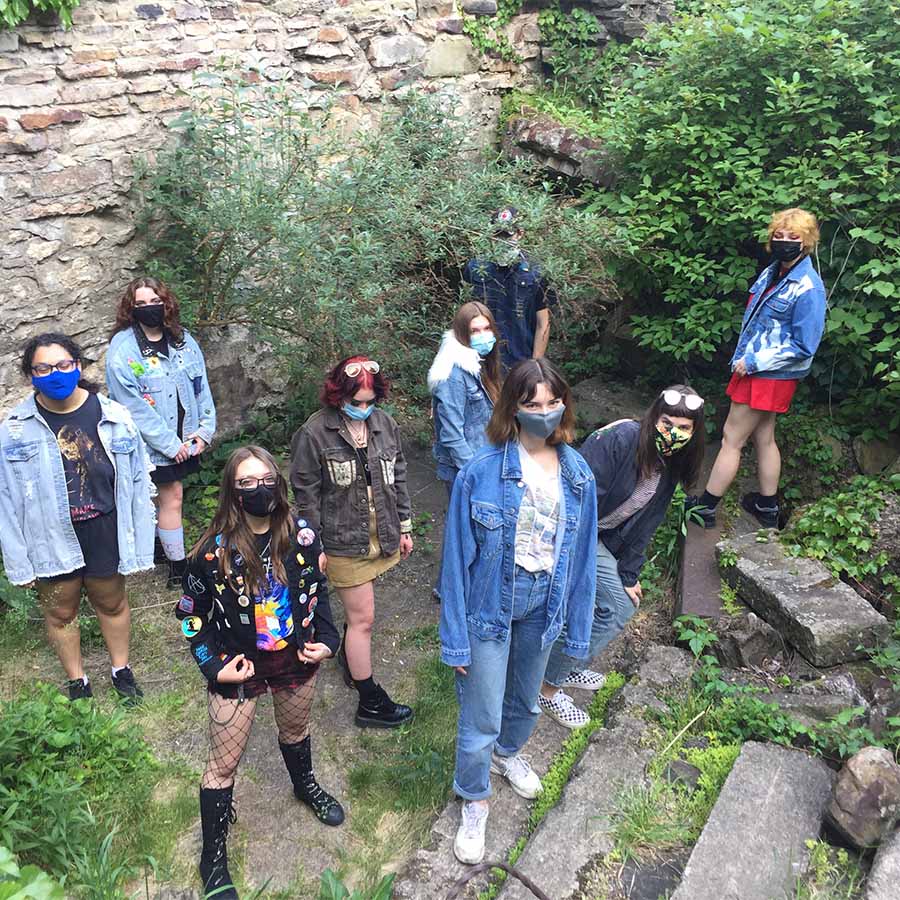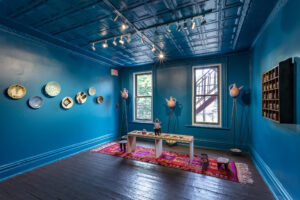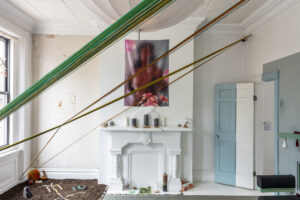This is a place for Black women and femmes, especially the m/others, the queers, the outcasts, the sex workers, the misunderstood, and the overlooked, to be at careless play, at deserved rest, deep in thought, and rooted in joy with their mothers.
This play is a reflection on the (im)possibility of accepting diversity and the other. The fragmented body of the neoplasm—the fruit of unstable conditions—overcomes barriers, loves and denies itself and others, wanders around, forgetting its profession. It frequently and with pleasure divides, goes through dangerous palpation, questions the possibility of contact with the experience of the other. Poorly brought up but very successful, it invites us to a trans-species transition.
Lorem ipsum dolor sit amet, consectetur adipiscing elit. Fusce at elit quis felis ullamcorper vehicula non in est. Maecenas finibus pharetra justo et faucibus. Nulla eu tortor vel ex volutpat efficitur. Vivamus placerat turpis in aliquet venenatis. Quisque ac lacinia mauris. Nam quis lobortis elit. Vestibulum sagittis nisi sit amet euismod hendrerit. Mauris non sodales odio. Donec efficitur molestie quam, sed lobortis massa vestibulum ut.
Nunc at arcu sodales nisi porta euismod non vel neque. Phasellus at lobortis ante, in suscipit justo. Proin non purus vitae nisi molestie consectetur. Vestibulum volutpat lobortis interdum. Vestibulum pretium ligula lorem, egestas ultricies lectus ultricies ac. Curabitur venenatis vulputate dolor.
A lush underground sanctuary blanketed with vines of ivy, eucalyptus, and wisteria houses six towering goddesses with six corresponding altars of worship. Each goddess is a Black woman; deservedly exalted; adorned in the gifts left for them; and housed in communion with her sister deities. Evidence of recent Bacchanalia and worship–wine glasses, cheese & fruit, discarded garments, candles, incense, sage, oils, herbs–are scattered throughout, converging in the middle of the space.
The goddesses depicted are Vodou, Yoruban, Hindu, Brazilian, Hebrew, and Roman and wouldn’t, in any recognized instance, be worshiped together. But here, cultural, religious, and spiritual delineations are non-existent. Traced all the way back to Mitochondrial Eve (the matrilineal ancestor from whom all humans descend) and beyond, people of the African diaspora are the origins of humanity. Black women, then, as creators of original life, are both the gods and the earth of humanity. The all.
This is a place for Black women and femmes, especially the m/others, the queers, the outcasts, the sex workers, the misunderstood, and the overlooked, to be at careless play, at deserved rest, deep in thought, and rooted in joy with their mothers: Mami Wata, Oshun, Aranyani, Venus, Lilith, and Pomba Gira. The intent of depicting Black womanhood as goddess-like is not to separate us from our humanity, but to remind us that it's a matter of self-preservation to begin all worship within and in our likeness. And “7”, highly symbolic in numerology and multiple cultures, religions, antiquities, and practices, ultimately stands for every Black woman who steps in this space. You complete this reverent compilation. You are the final, the infinite, the omega. There aren’t six goddesses, there are seven, and the 7th is you.
7 is my homage and my reminder and the installation will continue to grow; the altars continue to accumulate offerings, for the entirety of its run in this space.
To Black womanhood–motherhood, femininity, sexuality, fertility, rage, wrath, defiance and all combinations therein–be the glory.
Artist Statement
My artistic practice, as a visual artist, photographer, and queer Black woman, is defined by using portraits and video to explore identity—primarily Black womanhood and queer personhood—and to challenge a society that remains harsh to the marginalized and the intersectional. I consider the individuals I work with to be my muses and often shoot on location in personal, intimate spaces or natural settings.
I exalt Black women and femmes, including myself—full-bodied, full of dreams, and exploring our own concept of sexuality and identity in a society that demands our labor and assimilation—as beautiful nonconforming works. As the harbingers of social and civil evolution, we hold the stories of the world and deserve the right to tell our own. For those who don't believe their likenesses and experiences are reflected within the most revered exhibition spaces, I contextualize our very existence as its own museum of modern art.
Exhibition
sarah huny young is an award-winning photographer and visual artist primarily documenting and exalting Black womanhood and queer communities through portraiture and video. Framing her subjects as muses, she often shoots on-location in personal, intimate spaces and natural settings. Her work has been featured in The New York Times, The Washington Post, ESPN, New York Magazine, Pittsburgh City Paper, and more.











